Look before you lift...
This is an astounding sequence of photos that was sent to me by my friend Scott Fraser. The driver of the car had one too many and drove off the quay into the relatively shallow water. It appears that the series of crane operators had also had one too many...
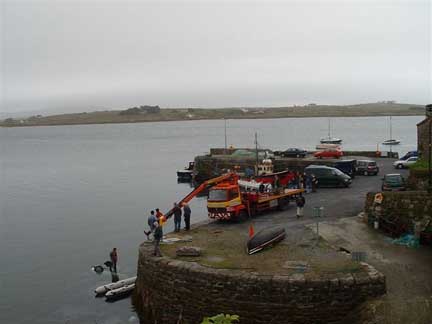
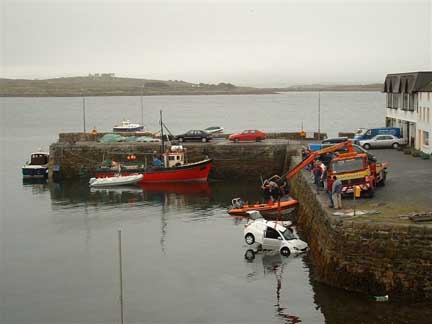
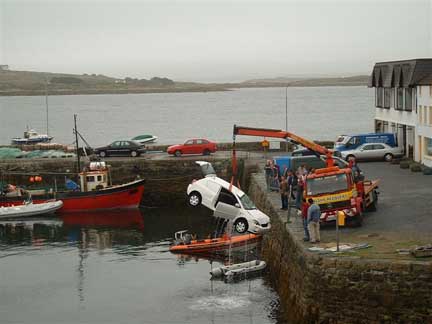
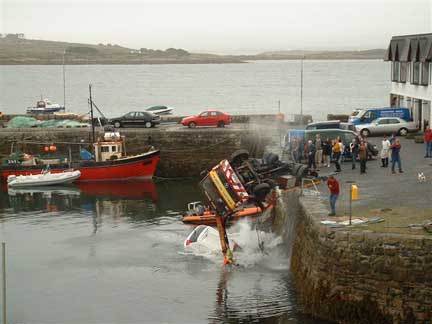
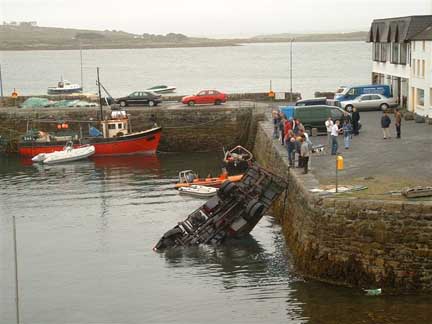
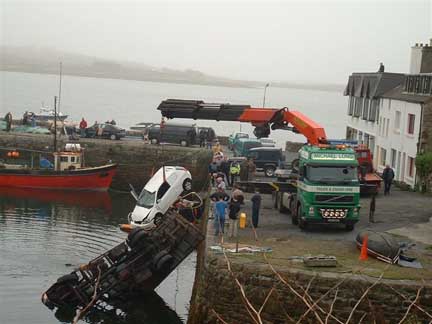
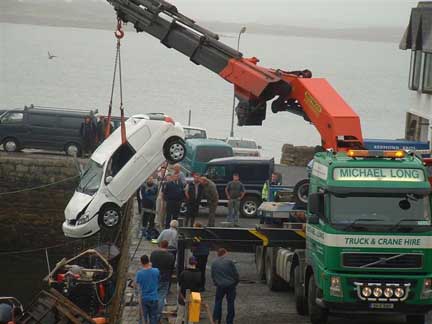
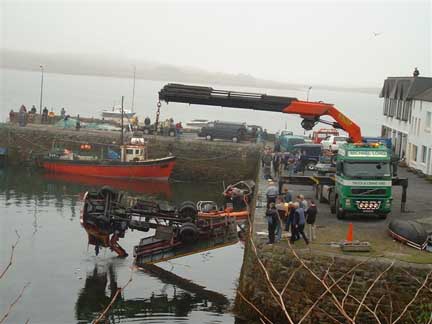
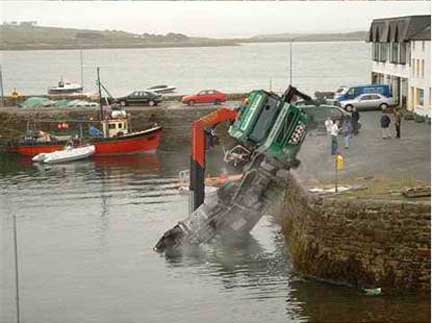
Although this sequence is hilarious, several readers have suggested that one or more of the photos may be fakes. Thus, enjoy this for what it appears to be, whether or not it really happened...
In Case you wanted to know:
The angle at which a sling holds a given load influences the effective weight of the load. Stresses are minimal for loads with slings held perpendicular to the load, as shown in Figure A. For distributing the load vertically among more than a single leg of a sling, a spreader bar may be used. As shown in figures B-D, increasing the angle of the sling to the hook from 30 to 60 degrees increases the effective mass of the load from 1154 lbs to 2000 lbs, essentially doubling the weight on each leg of the sling at 60 degrees. The chart in the middle offers a handy guide for assessing the effective angle of the sling to the relative weight. Thus, it is always better to limit the angle of the sling. Further, such changes in sling angle must be accounted for in lifts that are close to the sling weight limit and/or for critical lifts (greater than 90% of the crane limit). Crane operators should download a copy of this chart and carry it with them during crane operations.
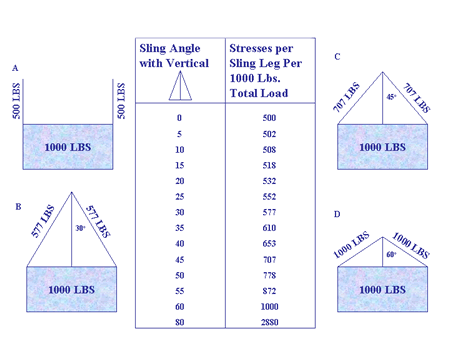
We are becoming the repository for information on crane accidents. An alert reader sent us these photos of a crane incident that occurred in the Netherlands at Shell's Antwerp Refinery. During a major turnaround, fan tubes were being lifted using a tube tray. During the lift and while the tube tray was directly over the crane operator's cab, the tube tray deviated from horizontal and the fan tubes slid off and plunged like arrows into the operator's cab. Note that the tubes were not properly secured to the tray during the lift operation. The attached pictures show the condition of the operator's seat just after the accident. Amazingly(and thankfully), the operator suffered only minor scratches in one leg.
The pictures tell the tale.
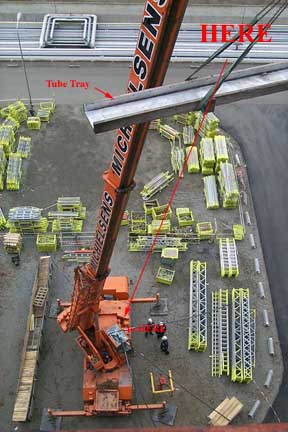
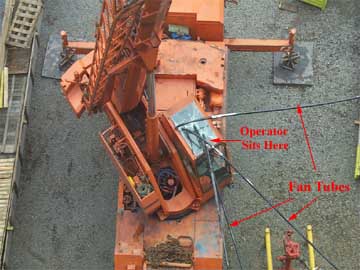
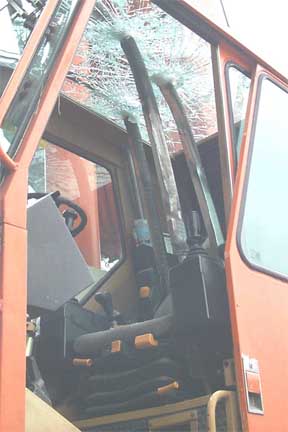
This is a reminder to take all "lifts" seriously, from the lightest and least complex to the heaviest and most complex. Proper rigging and securing of loads SAVES LIVES.
So SEND US your photos of crane accidents and we will do our best to help improve safety conditions out there! Given the strange nature of internet search engines, we will also publish photos of endangered cranes (the water-bird type) if you send them.
What does this have to do with Swing Dancing?
You have to be aware of all these concepts before you start to do aerials -- you must understand that the proper orientation to your partner is absolutely essential. If you try to do a Kip or a Death Drop without considering the moment arm of the load, you will (at best) wind up on the floor and (at worst) with a dislocated back or concussion.
Counter for the Entire Site (not just this page..)
Home | About Lindy | 1940s Collectibles | Upcoming Events | Dancers' Forum
The Guide - Establishments - Travel - Accessories
Music | Links | Photo Gallery | Extras | Contact